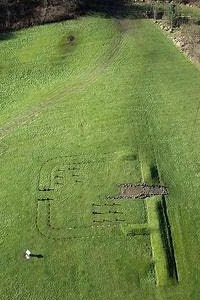 Scholars are sometimes tempted to step outside their area of expertise. This is almost always ill-advised.
Scholars are sometimes tempted to step outside their area of expertise. This is almost always ill-advised.
I recently attended a public lecture by a figure of international standing. The scholar in question (let's call him Professor X to avoid undue embarrassment) was asked a question about Sino-Roman relations.
This is a perennial chestnut that ranks alongside the Disappearance of the Ninth Legion as a source of public misinformation. Scholars are advised to tread warily.
Nevertheless, rather than admit professional ignorance, Professor X treated us to his antediluvian view of Chinese history, misleading his audience (an unforgivable crime) and exposing his incompetence to any who, like this emperor, happen to know a little about the subject.
Two elements of Professor X's reply stuck in my mind. First, he recommended that his interlocutor purchase a copy of Sir Mortimer Wheeler's Rome Beyond the Imperial Frontiers, a book which is over 50 years old and was already out-of-date when the first reviews appeared. This was a poor suggestion.
Second, he sagely advised his interlocutor, in tones designed to instill professional confidence, that an embassy from Han China had indeed arrived in Rome during the reign of Antoninus Pius, your very own blogger. This, likewise, was a poor suggestion.
Did China know that Rome existed?
The evidence is tricky enough for Sinologists, so what chance does our Romano-British Professor X stand? The best approach would simply have been to present the different threads of evidence and allow common sense to prevail.
It is often stated that ancient Chinese texts refer to the Roman empire. Unfortunately, it's not quite that simple. The texts in question refer to Da-Qin (or Ta-Ch'in), literally "Greater China". Where is this Greater China?
The same ancient texts relate that Da-Qin was also known as Li-jian (or Li-kan, or Lixuan). But Sinologists agree that Li-jian was the Chinese word for Hyrcania (a northern province of the Parthian empire corresponding roughly to present-day Turkmenistan). Not Rome.
This simply serves to illustrate that Chinese writers had only a very vague notion of the west. Their limited repertoire included T'iao-chih (or Tiaozhi), a placename reckoned to represent Seleucia, which lay to the west of Anxi, thought (on no clear authority) to represent Parthia, both of which lay on the great sea (maybe the Persian Gulf, maybe the Indian Ocean, maybe neither).
Did Rome know that China existed?
The eminent Cambridge Sinologist Michael Loewe wisely warns that "identification of Ta-Ch'in and Rome should properly been seen as an abstraction". No Indian, far less Chinese, visitors had ever set foot in the eternal city. So why did Professor X assure us, quite confidently, that the emperor Antoninus Pius had received Chinese visitors?
It would have been a great enough stretch for Chinese authorities to obtain knowledge of India. (See the map, above, borrowed from The Daily Telegraph, which demonstrates the enormous distances involved. And mis-spells Parthia.) In fact, Chinese memories of a "Greater China" in the west may preserve echoes of Alexander's empire rather than the Roman empire. A second century BC king of the Punjab, on meeting a Buddhist philosopher, is said to have remarked that he hailed from "Greater China", and specifically from Alisan, thought by Sinologists to represent the Egyptian city of Alexandria.
A Chinese text known as the Hou-Hanshou records that, in AD 97, Gan Ying "looked upon the Western Sea". If this was the Persian Gulf, he was far-travelled indeed. The mariners on the coast evidently dissuaded the Chinese traveller from proceeding any further on account of the distances and dangers involved. They clearly had only the vaguest notion of the west.
That would have been the end of the matter, except that an embassy sent by "King Andun of Greater China" to the Han court in AD 166 has been explained as a reference to the emperor Marcus Aurelius, on the grounds that Andun sounds like Antoninus!
We really shouldn't dabble in areas beyond our competence!
* See also: No Romans in China
 A week or so ago, the BBC News web site
A week or so ago, the BBC News web site  After winning recognition as a World Heritage Site
After winning recognition as a World Heritage Site